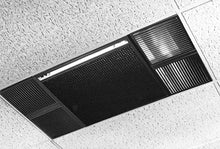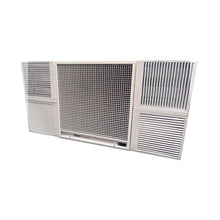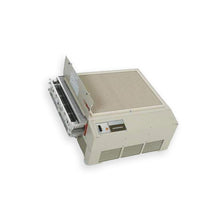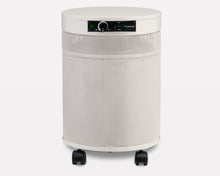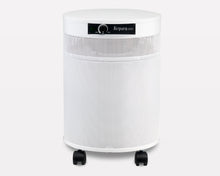Electrostatic vs. carbon air cleaners

Targeting Different Air Quality Challenges: Electrostatic air cleaners vs. Activated Carbon air cleaners for Your Business
In today's competitive commercial landscape, the quality of indoor air is a non-negotiable aspect of a thriving business. It directly influences employee productivity, occupant health, customer satisfaction, and even regulatory compliance.1 However, air pollutants are diverse, ranging from visible dust to invisible gases and odors.2 This means that not all air purification technologies are created equal, nor do they address the same challenges.3 Understanding these distinctions is crucial for making a sound investment in your facility's air quality.
This post will explore two distinct air purification technologies: electrostatic precipitators, primarily designed for particulate matter, and activated carbon filtration, which targets gases, odors, and volatile organic compounds (VOCs). By understanding their unique mechanisms and applications, you can better determine the right approach for your commercial space.
Understanding Electrostatic Precipitators
Electrostatic precipitators (ESPs) utilize an electrical charge to remove airborne particles from an airstream.4 The typical operation involves:
- Ionization Stage: As air enters the ESP, it passes through a high-voltage electrical field (corona) where airborne particles are given a positive electrical charge.5
-
Collection Stage: These newly charged particles then move through a section containing a series of collector plates that are either oppositely (negatively) charged or grounded.6 The electrostatic force of attraction pulls the charged particles out of the air and onto these plates.7
Advantages of Electrostatic Precipitators:
- Effective on Particulate Matter: ESPs can be efficient at capturing a range of particulate sizes, including fine and sub-micron particles like dust, smoke, and some allergens.
- Reusable Collection Components: The collector plates are designed to be cleaned and reused. This can reduce the ongoing consumable costs often associated with disposable filter media, a feature highlighted for applications with high particulate loads.
Considerations for Electrostatic Precipitators:
-
Ozone Production: A critical factor with ESPs is their potential to generate ozone (O3) as a byproduct of the ionization process. Ozone is a known respiratory irritant, and its indoor concentrations are regulated.8 While some two-stage ESP designs aim to minimize ozone, this is a vital aspect to verify, especially for occupied commercial spaces.9
- Maintenance Intensity: To maintain optimal performance, the collector plates in an ESP require regular and thorough cleaning.10 As particle buildup occurs, efficiency drops. This cleaning can be labor-intensive and, if not performed meticulously, may result in diminished performance or even the re-release of particles.
- Primarily for Particles: ESPs are engineered to remove particulate contaminants.11 They are generally ineffective against gases, chemical fumes, volatile organic compounds (VOCs), or odors unless specifically combined with other filtration technologies.
- Performance Variability: Effectiveness can decline noticeably as the collector plates become soiled between cleaning cycles.
Understanding Activated Carbon Filtration
Activated carbon filtration operates on the principle of adsorption, a process where gaseous pollutants, odors, and VOCs adhere to the vast internal surface area of the carbon material.12 Activated carbon is created by treating carbonaceous materials (like wood, coal, or coconut shells) with heat and activating agents to create an incredibly porous structure, riddled with millions of microscopic pores.13
When air containing gaseous contaminants passes through an activated carbon filter:
- Adsorption Occurs: Molecules of VOCs, odors, and other specific gases are attracted to and trapped within the intricate network of pores on the carbon's surface.
- Contaminants are Held: These pollutants are effectively held by weak intermolecular forces (Van der Waals forces) until the carbon's adsorption sites are filled.
Advantages of Activated Carbon Filtration:
- Highly Effective for Gases, Odors, and VOCs: Activated carbon is a leading technology for removing a wide array of airborne chemicals, fumes, and unpleasant smells that particulate filters or ESPs cannot address.14
- No Harmful Byproducts: The adsorption process itself does not produce any harmful byproducts like ozone.
- Versatility: It can be used to target specific chemical pollutants by selecting particular types of carbon or impregnating the carbon with chemicals to enhance its capacity for certain compounds.
- Improves Overall Air Quality Perception: By removing odors, it significantly enhances the perceived freshness and cleanliness of indoor air.15
Considerations for Activated Carbon Filtration:
- Finite Lifespan (Saturation): Activated carbon has a limited capacity to adsorb pollutants. Once all its active sites are occupied (saturated), it can no longer remove contaminants and may even release previously captured pollutants if overwhelmed. The filter media must then be replaced.
- Not for Particulate Matter: Activated carbon filters are not designed to capture particulate matter like dust, pollen, or dander. For this reason, they are almost always used in conjunction with a particulate filter (like a pre-filter or a HEPA filter) to protect the carbon from becoming clogged with dust and to provide comprehensive air cleaning.
- Specificity and Capacity: The effectiveness against specific gases varies depending on the type of carbon, the concentration and type of pollutant, temperature, humidity, and airflow rate.16 Not all carbon filters are equally effective against all gaseous contaminants.
- Replacement Costs: The need for regular replacement of the carbon media contributes to ongoing operational costs.
Head-to-Head: Electrostatic Precipitators vs. Activated Carbon Filtration
|
Feature |
Electrostatic Precipitator (ESP) |
Activated Carbon Filtration |
|
Primary Contaminant Focus |
Particulate matter (dust, smoke, allergens) |
Gases, odors, Volatile Organic Compounds (VOCs) |
|
Mechanism |
Electrical charge and collection |
Adsorption (molecular bonding to carbon surface) |
|
Byproducts |
Potential for ozone generation |
Generally none from the filter medium itself |
|
Maintenance & Longevity |
Regular, thorough cleaning of reusable collector plates. |
Periodic replacement of saturated carbon filter media (consumable). |
|
Effectiveness Spectrum |
Fine to coarse airborne particles. |
Specific ranges of gaseous pollutants, odors. |
|
Impact on Gases/Odors |
Minimal to none. |
High effectiveness. |
|
Impact on Particles |
High effectiveness (when clean). |
Minimal to none (unless combined with a particulate filter). |
|
Primary Ongoing Cost |
Labor for cleaning, electricity. |
Replacement carbon filter media, electricity. |
Which Technology (or Combination) is Right for Your Business?
The key takeaway when comparing electrostatic precipitators and activated carbon filters is that they address fundamentally different types of air pollutants. Therefore, the choice isn't usually an "either/or" scenario for comprehensive air quality management; rather, it's about identifying the primary pollutants in your commercial space and selecting the appropriate technology or, more commonly, a combination of technologies.
Consider an Electrostatic Precipitator if:
- Your primary concern is a very high load of particulate matter (e.g., certain manufacturing processes, workshops generating significant dust or fumes, commercial kitchens with heavy grease particulate).
- The reusability of collection plates offers a significant operational or cost advantage despite the intensive cleaning requirements.
- Ozone emissions can be verified as negligible for the specific unit or can be appropriately managed and vented, particularly in industrial settings where occupancy might be different from office environments.
Activated Carbon Filtration is Essential When:
- Odors are a concern: In restaurants, food processing areas, waste management zones, fitness centers, or any space where unpleasant smells impact the environment.17
- VOCs and Chemical Fumes are Present: In facilities using solvents, cleaning agents, paints, adhesives; in newly renovated or furnished spaces off-gassing chemicals (like formaldehyde); in laboratories, salons, or light industrial settings.
- General Air Freshness is Desired: In offices, hotels, and retail environments to remove trace odors and create a more pleasant atmosphere.
The Power of Combination: The Multi-Stage Approach
For most commercial environments seeking comprehensive air purification, a multi-stage system is the most effective solution. Such systems typically combine:
- Pre-filters: To capture larger particles, protecting more sensitive and expensive downstream filters.18
- Particulate Filtration: This could be an ESP in specific high-particulate industrial scenarios, but more commonly in general commercial settings, high-efficiency mechanical filters like HEPA filters are used for superior fine particle capture without ozone concerns.
- Activated Carbon Filtration: To adsorb odors, VOCs, and other gaseous pollutants that particulate filters miss.19
- (Optional) Other Technologies: Such as UV-C germicidal irradiation for microbial control, though its effectiveness is highly dependent on system design.
By deploying ESPs or HEPA filters to tackle particles and activated carbon for gases and odors, businesses create a robust defense against a wider spectrum of indoor air contaminants.
Making an Informed Decision
When evaluating air purification solutions for your commercial facility, the first step is to identify the primary types of air pollutants you need to address.
- Are you dealing mainly with dust, smoke, and airborne particulate?
- Or are chemical fumes, off-gassing from materials, and pervasive odors the main challenge?
- Most likely, it's a combination of both.
Consult with air quality professionals who can help assess your specific needs. Look for solutions that offer verified performance data, are appropriately sized for your space, and have maintenance requirements that align with your operational capabilities. Remember that while electrostatic precipitators offer a solution for particulate-heavy environments with reusable components, their ozone potential and maintenance needs must be carefully weighed. Activated carbon, on the other hand, is indispensable for tackling the invisible threat of gases and odors but does not address particles on its own.
By understanding these distinctions, you can invest wisely in an air purification strategy that truly enhances the health, safety, and productivity of your commercial environment.

